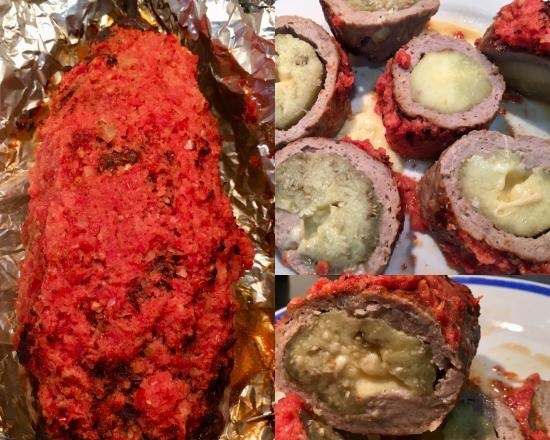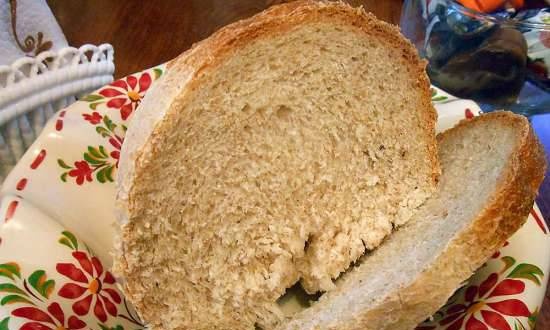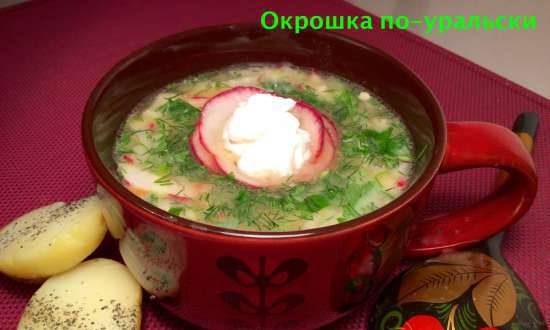|
 Cereals belong to different botanical families. The family of cereals includes: wheat, oats, rye, barley, millet, corn, sorghum and fig. Buckwheat belongs to the buckwheat family. Legumes (peas, lentils, beans, beans, vetch, soybeans) belong to the moth family. Oil-bearing plants are distinguished into a separate group. Cereals belong to different botanical families. The family of cereals includes: wheat, oats, rye, barley, millet, corn, sorghum and fig. Buckwheat belongs to the buckwheat family. Legumes (peas, lentils, beans, beans, vetch, soybeans) belong to the moth family. Oil-bearing plants are distinguished into a separate group.
Wheat... Several types of wheat are known. Soft and durum wheat is of the greatest production value.
Soft wheat is the most widespread in the USSR, it is available in spring and winter, durum wheat is mainly spring.
Wheat for its baking properties, for the quality and quantity of proteins and gluten free is divided into three groups: "strong", "medium strength" and "weak".
Wheat "strong" must have a glassiness of at least 60% and a gluten content of at least 28% with good elasticity and elasticity.
Wheat of "medium strength" cannot be used as an improver, but bread from such wheat flour is of good quality. Wheat of "medium strength" must have a glassiness of at least 40% and a gluten content of at least 25%.
Wheat "weak" gives bread of satisfactory quality only when added to it "strong" wheat.
Rye... Winter and spring crops are cultivated. The rye grain is elongated. The color of the grain is yellow, green, brown. In terms of chemical composition, rye is close to wheat, but the main difference lies in the unequal properties of protein substances.
Barley... It is widely used in cereals, brewing and confectionery industries.
Taking into account the diverse use of barley grain, five standards have been established: food and feed barley, cereals, flour, malting barley and barley for alcohol production.
 Oats... It is used mainly for livestock feed; in addition, a significant part of oats is processed into oat groats. Oats... It is used mainly for livestock feed; in addition, a significant part of oats is processed into oat groats.
Corn... According to botanical characteristics, it is divided into the following groups: ordinary (or siliceous), dentate, starchy, bursting, sugar, waxy, scaly. Each of these groups has several varieties.
Millet... Standard millet is divided into four types: white and cream, red, yellow and gray. In our country, yellow and red varieties are especially common.
Millet contains more than 4% fat, a significant part of which is concentrated in the embryo.
Millet is mainly used for the production of millet.
Buckwheat... It is cultivated mainly for the production of buckwheat. For flour, buckwheat is ground in small quantities. Depending on the content of the pure kernel, cereal buckwheat is divided into three classes.
Rice... Mainly used for food purposes. Rice is divided into two subspecies: ordinary, with a caryopsis 5-7 mm long or more; short-grained, with a caryopsis about 4 mm long. Most common rice ordinary. According to the consistency of the grain, rice is glassy, semi-glassy and mealy. The best is considered to be glassy - rice, as it retains its shape well during cooking and gives a crumbly porridge.
Leguminous crops... They are distinguished by a high content of protein substances, mineral salts and vitamins. In addition, soybeans contain 18 to 20% fat.
Legumes include peas, beans, soybeans, lentils, beans and others.
Pea grains are of great nutritional value. They contain vitamins (especially green peas) as well as sugars, proteins and starch. The nutrients it contains are well absorbed by the human body.
There are food peas - with a colorless shell and fodder - with a gray, brown or brown shell.
Food peas are divided into yellow and green by color.
Beans in their chemical composition are close to peas, but the taste and digestibility of beans is higher than that of peas. In shape, beans are round or ovoid, oval, spherical, kidney-shaped, cylindrical.
Depending on the color of the grains, beans are divided into three types: white, colored solid and colored variegated.
Soybeans are very valuable crops due to their chemical composition. Soybean grain goes for the production of flour, butter, cheeses, which are widely consumed in countries where soy is one of the main sources of dietary protein. Various confectionery products are made from soybeans. Unripe soybean seeds are used as food boiled.
In appearance and color, soybeans are divided into four types: yellow, green, brown and black. Yellow soybeans are most highly valued.
Flour
Wheat and rye are the main raw materials for flour production. Corn, soybeans and barley are processed into flour in very limited quantities, mainly for the manufacture of local types of bread and for the confectionery and food industries.
The process of processing grain into flour consists of two stages: preparing grain for grinding and grinding grain into flour.
Preparation of grain for grinding includes the following operations: cleaning grain from impurities, surface treatment of grain with a dry or wet method, hydrothermal treatment (conditioning), additional moistening and aging of grain.
The process of grinding grain into flour consists of operations: grinding grain, sorting intermediate grinding products by size and quality, grinding intermediate products into flour.
The grain is crushed in roller flocks.
Wheat and rye mills are divided into two types: one-time and repeated. With a single grinding, as a result of a single passage of grain through the grinding machines, flour is immediately obtained, and the bran remains in the flour completely in a crushed form. The flour yield is 99.5%, shrinkage is 0.3% and mechanical losses are 0.2%. When grinding again, the grain is turned into flour on grinding machines not immediately, but in several stages. Re-grinding is divided into simple and complex. Simple grinding can be carried out without selection and with selection of bran. Simple repeated grinding with selection of bran includes wheat wallpaper with a yield of 96%, rye wallpaper with a yield of 95% and peeled with a yield of 87%. The amount of flour obtained by grinding, expressed as a percentage of the mass of the grain, is called the flour yield.
Complex mills of rye include single-grade mills into seeded flour with a yield of 63% and two-grade mills into peeled flour (with a yield of 65%).
With complex grinding of wheat, flour of the second grade is obtained with a yield of 85%. Complex grindings also include three-grade and two-grade grinds with a grain flour yield, of the highest, first and second grades, and single-grade grinds with a flour yield of 72%.
Wheat flour mills produce:
- baking flour - grit, premium, first and second grades, wallpaper;
- pasta flour from durum or soft wheat - the highest grade (gritty), first grade (semi-fragile) and second grade.
Krupchatka - the best grade of wheat flour obtained by grinding glassy wheat. It has a white or cream color with a yellowish tinge, consists of the smallest grains and has high baking properties (it is distinguished by additional swelling after kneading the dough). With three-grade or two-grade grinding, grit is obtained with a yield of 10%; ash content of flour is not more than 0.60%, raw gluten is not less than 30%.
Top grade — fine flour, finer to the touch than grains, white or white in color with a creamy shade. Flour of the highest grade is produced with three-grade grinding with a yield of 10 and 15% and with two-grade grinding with a yield of 40%. Ash content of flour is not more than 0.55%, raw gluten is not less than 28%.
First grade - flour is white or white with a yellowish tinge, obtained with single-grade grinding with a yield of 72% and with multi-grade flour with a yield of 30, 35, 40, 45 and 60%. Ash content of flour is not more than 0.75%, raw gluten is not less than 30%.
Second grade - flour is white in color with a yellowish or grayish tinge, obtained with single-grade grinding with a yield of 85% and with multi-grade flour with a yield of 33, 28 and 23%. Ash content of flour is not more than 1.25%. raw gluten not less than 25%.
Wallpaper flour is obtained from wheat with a yield of 96%, the color is white with a yellowish or grayish tinge and noticeable particles of shells, the ash content of flour is less than 0.07% lower than the ash content of the grain before cleaning, wet gluten but less than 20%.
Wallpaper wheat-rye flour produced from a mixture of 70% wheat and 30% rye with a yield of 96%, has a white color with a grayish tinge and noticeable shell particles; the ash content is the same as that of wallpaper flour.
Durum or high-glassy soft wheat is also used to produce flour for pasta the highest grade (grains) with a yield of 15, 20, 25 and 10%; first grade (semi-fragile) with a yield of 40, 35 and 30%. The color of durum wheat flour is creamy with a yellowish tinge or light cream; the ash content of the premium flour is 0.75%, the first grade is 1, 10%, the raw gluten content is not less than 30 and 32%, respectively. The color of soft wheat flour is white with a yellowish tinge, the ash content of the premium flour is 0.55%, the first grade is 0.75%, and the raw gluten is at least 28 and 30%, respectively.
In addition to the highest and first grades, when processing wheat into pasta flour, second-grade flour is obtained with a yield of 23 and 33%. The color of the flour is creamy with a yellowish tinge; ash content 1.75%, wet gluten not less than 25%.
Seeded flour, peeled flour and wallpaper are made from rye.
Seeded - finely ground flour with an insignificant content of shells, with a yield of 63% for single-grade grinding and 15% for two-grade grinding, white color, ash content not more than 0.75%.
Peeled flour is a medium grade of rye flour obtained with a single-grade grinding with a yield of 87% and with a two-grade - 65%; color — grayish-white, ash content not more than 1.45%.
Wallpaper flour produced with a yield of 95%, the color is grayish-white with noticeable particles of the shells; ash content 2%, but not less than 0.07% lower than the ash content of pure grain before cleaning.
Rye wheat flour, produced from a mixture of 60% rye and 40% wheat with a yield of 95%, has a grayish-white color with visible shell particles. Ash content the same as rye flour.
Flour quality indicators... The quality of flour is determined by organoleptic and physico-chemical indicators. TO organoleptic indicators of flour quality include color, smell, taste, presence of mineral impurities; to physical and chemical indicators - grinding coarseness, humidity, ash content, gluten content, etc.
Flour color depends on a number of reasons: type of grain, type of grinding, quality and type of impurities, etc. Durum wheat flour is creamy, while soft wheat flour is lighter in color. The less bran the flour contains, i.e. the smaller its yield, or the higher the grade, the lighter it is. You can determine the type of flour by color.
Foreign odor indicates flour defects: musty or sour - deterioration of flour as a result of self-combustion or that flour is obtained from poor-quality grain; honey - for the presence of a tick; wormwood - with an admixture of wormwood, etc. Good-quality flour should be free of foreign odors (no musty and moldy).
Foreign taste indicates impurities or qualitative changes in flour; a bitter taste indicates a strong degree of warming or the presence of wormwood, a clearly sweet taste - a large admixture of flour from sprouted grains. The off-flavor of flour will almost always be passed on to the bread and reduce its quality. Good quality flour has a slightly sweetish taste, without a bitter or sour taste.
Mineral impurities in flour indicate poor grain cleaning. When chewing standard flour, you should not feel a crunch on your teeth. The content of mineral impurities can also be determined by a laboratory method.
Humidity flour is of great importance in assessing the baking qualities of flour and in particular in determining the suitability of flour for long-term storage.According to the requirements of the standards, the moisture content of flour should not be higher than 15%. For flour intended for prolonged snoring, it is desirable to have a moisture content of no higher than 14%.
Coca's textbook (editor S.M. Timokhov), 1982
|
 Cereals belong to different botanical families. The family of cereals includes: wheat, oats, rye, barley, millet, corn,
Cereals belong to different botanical families. The family of cereals includes: wheat, oats, rye, barley, millet, corn, 





